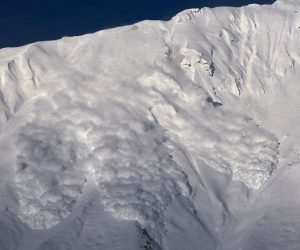UK universities have a world-class heritage in scientific and engineering research. The expectation is that the government will increase funding in research to offset any changes in EU-funded collaborative projects following Brexit.
These five projects demonstrate it will be money well spent.
Bristol University drones hunt for minefields
University of Bristol scientists are attempting to speed up the detection of landmines using drone-based sensors.
 The objective to not to detect individual mines, but to cut the time de-mining teams spend probing empty areas – something known as ‘area reduction’ – by accurately finding the edges of minefields.
The objective to not to detect individual mines, but to cut the time de-mining teams spend probing empty areas – something known as ‘area reduction’ – by accurately finding the edges of minefields.
Area reduction is vital because, according to the University, one person can only de-mine 10m2 per day, and there are an estimated 110 million active landmines in the world.
“Clearing these mines using current technologies would cost an estimated $30 billion and take over 1,000 years according to United Nations’ estimates”, said the University.|
The project started after discussions with Croatian scientists who have been using spectral analysis from aeroplanes to look at colour changes in vegetation growing on minefields.
Glasgow researchers build “smartphone” gravity meter to measure volcanos
Scientists at the University of Glasgow have created a very low cost gravity meter which could be used to monitor volcanic activity using commercial MEMS device technology found as accelerometers in smartphones.
 The result they says is a sensitive detector capable of measuring minute changes in gravity, and at significantly lower cost than a traditional gravity meter (gravimeters).
The result they says is a sensitive detector capable of measuring minute changes in gravity, and at significantly lower cost than a traditional gravity meter (gravimeters).
They believe it could lead to a new type of affordable and portable gravimeters used for volcano monitoring, environmental surveying, and oil exploration.
The Glasgow device, dubbed ‘Wee-g’, uses a commercially available micro-electromechanical systems (MEMS) which are already being used as accelerometers in smartphones.
Compound Semiconductor cluster launches in Cardiff Castle
What is described as the world’s first Compound Semiconductor technology cluster has been launched in South Wales. It’s a joint business venture between Cardiff University and IQE, a supplier of advanced semiconductor wafers.
 The cluster, which aims to attract other European partners, has the potential to create 5,000 new jobs in Wales, believes Cardiff University.
The cluster, which aims to attract other European partners, has the potential to create 5,000 new jobs in Wales, believes Cardiff University.
The Cardiff compound semiconductor centre (CSC), at the heart of the cluster, was announced earlier in the year and is based on a £17.3m grant from the UK Research Partnership Investment Fund (UKRPIF), and a £12m pledge by the Welsh government to support the foundation.
AutoNaut autonomous boat listens to noisy ocean
Plymouth University is working with AutoNaut of Sussex on an autonomous wave-propelled boat to monitor sound levels in the ocean.
 The 5m vessel will tow a passive acoustic monitoring array from Devon-based Seiche.
The 5m vessel will tow a passive acoustic monitoring array from Devon-based Seiche.
“Human noise in the sea is of growing environmental concern due to its potential negative impacts on marine life,” said Dr Clare Embling of the Plymouth’s School of Marine Science and Engineering.
“Increasing levels of shipping and marine development raise noise levels in the sea and can make it more difficult for animals to communicate, and can displace animals from important feeding or nursing grounds and sometimes even cause physical injury.”
Embling leads the project with fellow lecturer Dr Simon Ingram. AutoNaut is a quiet platform, allowing both machine-made noise and the sounds produced by marine life, such as the whistles and clicks of dolphins and porpoises, to be measured over large areas.
University radar looks into avalanches
Scientists have seen inside avalanches for the first time, using a novel radar created by University College London which can reach where optical techniques fail .
 “By penetrating the powder cloud, you can observe the nature and direction of the flow of the 90% of snow that otherwise remains invisible,” said project leader Professor Paul Brennan of UCL.
“By penetrating the powder cloud, you can observe the nature and direction of the flow of the 90% of snow that otherwise remains invisible,” said project leader Professor Paul Brennan of UCL.
The radar was created as an instrument for the Swiss Federal Institute for Snow and Avalanche Research where natural and artificial avalanches are studies.
The challenge was to achieve 10m resolution throughout the falling mass from the safety of an observation post 1km away.
Brennan’s answer was to use a phased-array technique with 16 receive elements spaced horizontally two wavelengths apart, working with a single transmit antenna.
 Electronics Weekly Electronics Design & Components Tech News
Electronics Weekly Electronics Design & Components Tech News



